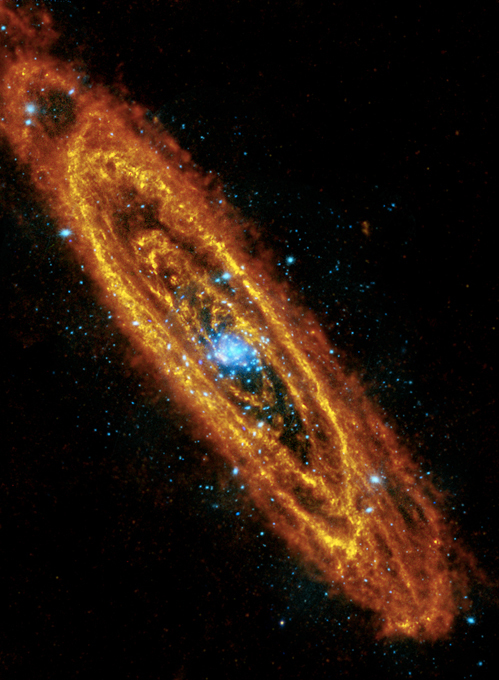Milky Way to collide with Andromeda Galaxy

The Andromeda–Milky Way collision is a galactic collision predicted to occur in about 4 billion years between the two largest galaxies in the Local Group—the Milky Way (which contains the Solar System and Earth) and the Andromeda Galaxy although the stars involved are sufficiently far apart that it is improbable that any of them will individually collide. The galaxy that will be the result of the collision is nicknamed Milkomeda

The Andromeda Galaxy is approaching the Milky Way at about 110 kilometres per second (68 mi/s).
The Andromeda Galaxy is approaching the Milky Way at about 110 kilometres per second (68 mi/s).

Up until 2012, there was no way to know whether the possible collision was definitely going to happen or not.
Up until 2012, there was no way to know whether the possible collision was definitely going to happen or not.

In 2012, researchers concluded that the collision is definite after using the Hubble Space Telescope to track the motion of Andromeda between 2002 and 2010.
In 2012, researchers concluded that the collision is definite after using the Hubble Space Telescope to track the motion of Andromeda between 2002 and 2010.

Andromeda's tangential or side-ways velocity with respect to the Milky Way was found to be relatively much smaller than the approaching velocity and therefore it is expected that it will directly collide with the Milky Way in around 4 billion years.
Andromeda's tangential or side-ways velocity with respect to the Milky Way was found to be relatively much smaller than the approaching velocity and therefore it is expected that it will directly collide with the Milky Way in around 4 billion years.

Such collisions are relatively common. Andromeda, for example, is believed to have collided with at least one other galaxy in the past,and several dwarf galaxies such as SagDEG are currently colliding with the Milky Way and being merged into it.
Such collisions are relatively common. Andromeda, for example, is believed to have collided with at least one other galaxy in the past,and several dwarf galaxies such as SagDEG are currently colliding with the Milky Way and being merged into it.



